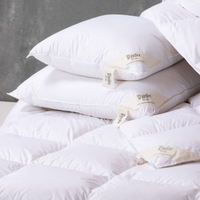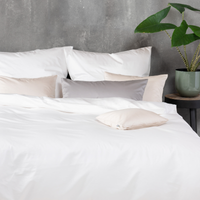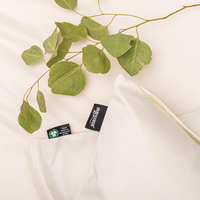Once again, we have had our textiles tested by the independent testing institute OETI (Ecology, Technology and Innovation) in accordance with the GOTS V6.0 standard and are extremely satisfied with the results.
To ensure our guaranteed quality, we carry out regular checks ourselves, independently of the GOTS audits.
We deliver the textiles packed in aluminum foil to the institute, where test samples are randomly selected from the individual boxes and subjected to the test.
Among other things, the presence of any toxic or harmful substances was examined.

The invisible danger in our textiles
Many home textiles are made from synthetic fibers that are treated with chemicals during production. These chemicals can remain in the textiles in the form of residues and outgas over time. Particularly in closed rooms, these volatile organic compounds (VOCs) can affect indoor air quality and lead to breathing difficulties, headaches and allergic reactions .

The most common toxins in textiles
a) Azo dyes: These dyes are often used in textiles and can release aromatic amines, which can be carcinogenic.
b) Formaledehyde: A well-known preservative that is often used in textiles and can cause skin irritation and respiratory problems.
c) Heavy metals: Certain textile dyes contain heavy metals such as lead or cadmium, which are toxic and pollute the environment.
d) Perfluorinated chemicals (PFCs): These are often used for water-repellent properties and are suspected of disrupting hormonal balance and polluting the environment.
The impact on the environment
Toxic substances in textiles not only end up on our skin, but also in the environment. When clothing is disposed of, these harmful substances end up in landfills and can affect groundwater and soil quality. In addition, many toxic chemicals are released into the air during the production of textiles and contribute to air pollution.
Consumer tips
Choose natural and certified materials: opt for home textiles made from natural materials such as organic cotton, hemp or linen. Certifications such as the "Global Organic Textile Standard" (GOTS) guarantee socially, ecologically and economically responsible production.
Wash new textiles thoroughly: Before using new home textiles, wash them several times to remove any residues.
Pay attention to manufacturer information: Find out about manufacturers' production practices and choose brands that are committed to toxin-free home textiles.
Our results




 Fast delivery
Fast delivery Co2-neutral shipping
Co2-neutral shipping Sustainable production
Sustainable production









